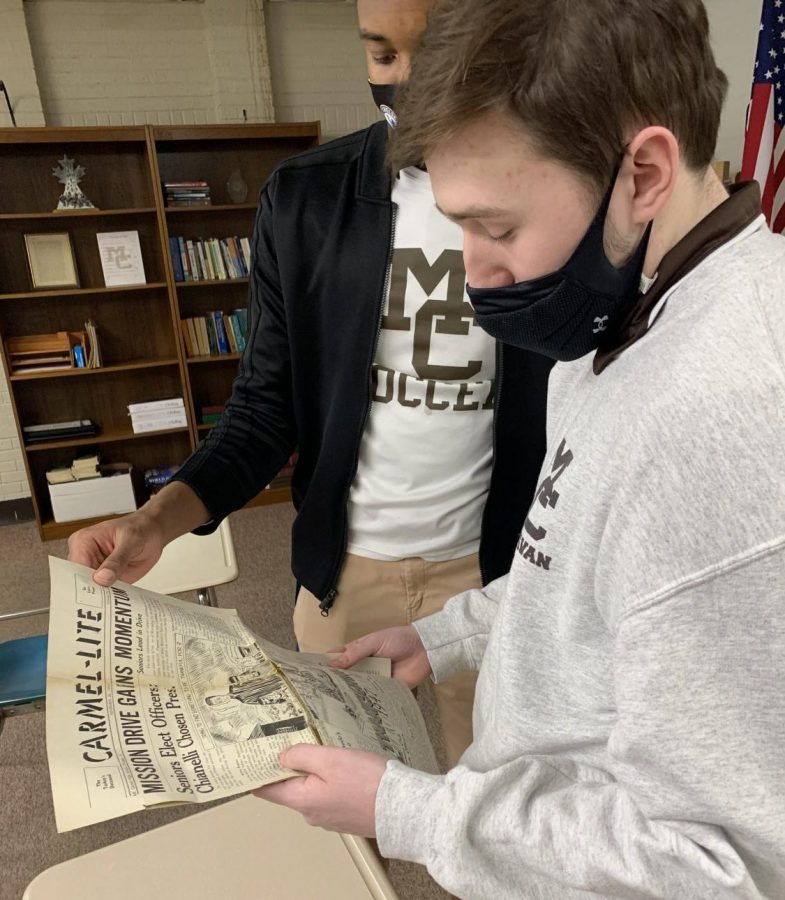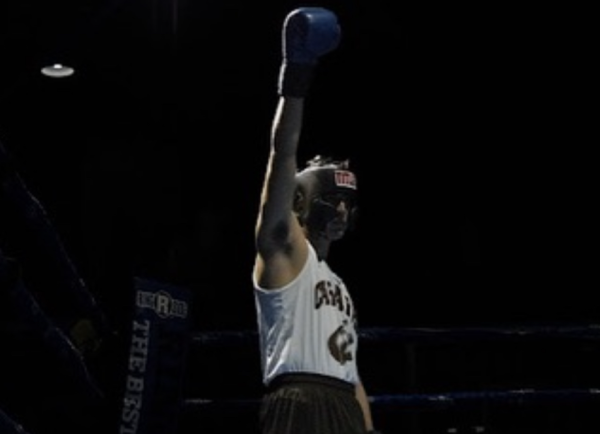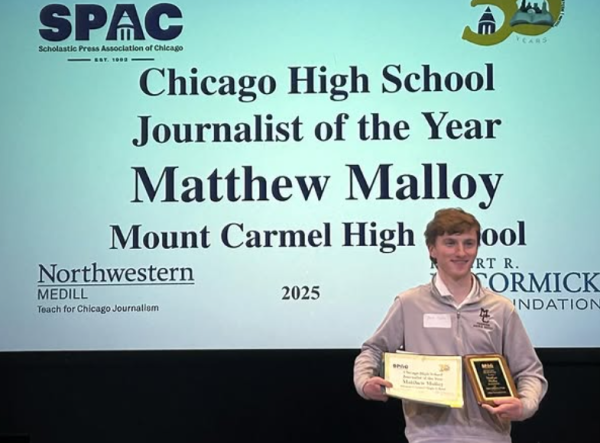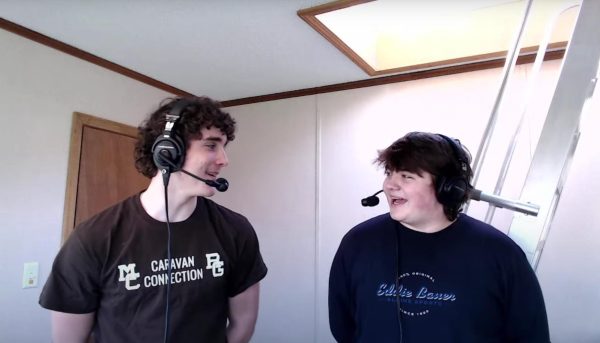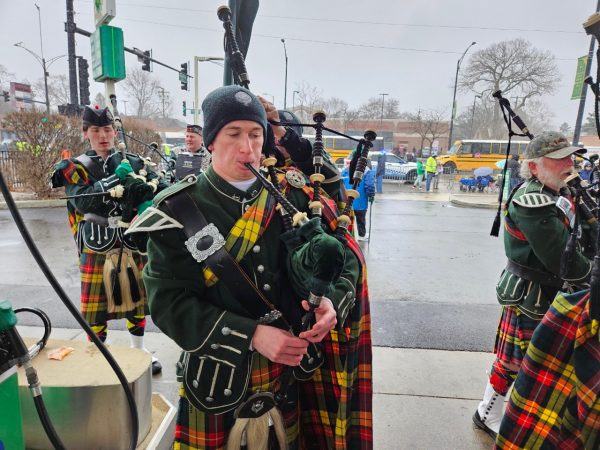Revisiting the Carmel-Lite after 73 years
Ben Fields and Blayr Young, MC Caravan staff writers, look over vintage Carmel-lite newspapers from the late 1940’s that were preserved for posterity by John Mills ’48.
Journalism is an important aspect of American culture, and newspapers that have stood the test of time can offer a glimpse into the past, and perhaps some wisdom for the present and future.
Recently the Mount Carmel Caravan staff received a batch of old newspapers from the 1940s. They were sent by Mr. Thomas Mills, the son of John Mills (Class of ’48). In sorting through his father’s keepsakes after his death, Tom Mills discovered this collection of student newspapers that his dad had saved as mementos of his years at MC. The student newspaper – then called the Carmel-Lite – was the predecessor of our current mccaravan.org website.
The twelve newspapers cover the era between 1946 and 1949 and offer a unique opportunity to revisit and explore the life of Carmel students in a post-war world, revealing how much was different, and that some things never really change.
First of all, the newspaper was produced by a staff of 21 students and a faculty moderator, and obviously was structured in a far different manner than today’s website.
It appears that the Carmel-Lite was published monthly, with eight to ten editions a year, each featuring four pages. The front page headlines trumpet the arts (“Orchestra Hall Greets Concert”), academic hopes (“Navy Offers College Scholarship”), faculty/staff news (“Fromhart Carries Ball to Loras”) and social life (“Junior Prom Holds Spotlight”) among other news.
Inside, the student journalists describe many events that would be familiar today, including topics like Student Council elections, the Mission Collection, the annual Alumni Banquet and graduation.
While many are familiar, the description of the events and the serious tone of many articles seem far removed from our current high school experience. For example, in the April ’47 issue, a front page story encourages participation in a spiritual organization known as the “Third Order of Carmelites” by proclaiming “Join Third Order and Insure Heaven.”
Another article that reveals the vivid differences between our worlds is headlined “Cardinal Imposes Curfew: Students in Panic as Curfew Rings,” and reports on Chicago Cardinal Stritch’s concern that post-prom activities had gotten out of hand. While he may have been correct, there seems little chance of such a curfew being imposed – or taken seriously – by today’s teens.
On the other hand, there are a number of features, including student generated art and cartoons (about Thanksgiving, class rings, JUG, and graduation) that show great creativity and add a certain charm to the newspaper.
It appears that many stories referenced upcoming events rather than past news. Today, given our ability to immediately upload a story to the website, we can keep current with breaking events happening both in and outside of school.
However, the staff of the Carmel-Lite would have faced the challenge of generating a month’s worth of information before the paper was ready to print. The staff likely would have had to be prepared to cut an article at any moment if a big athletic victory or important visit from a dignitary took precedence over older news.
The articles themselves were unique when compared to today’s writing. You could tell the differences between the less formal style of today’s writing and the more formal tone of the 1940s.
On the other hand, many articles covered the kinds of events we talk about today, such as the mission collection, the state football playoffs and prom. Some interesting events that I read about on the pages of the 1940s Carmel-Lite included a visit from the archbishop and articles about on the school band, which seems to have been a much bigger organization than our current band. As a member of the band today, it was interesting to read about what band members were up to seventy years ago.
On the sports page, there are references to familiar foes like St. Rita’s Mustangs and the Leo Lions, as well as long-gone rivals like St. Philip and St. Mel.
One aspect of all the editions was a “gossip column,” variously named “Shhh!! Overheard,” or “Inferno on Dante,” which offered thinly veiled rumors about the social life of upperclassmen. It struck me as funny, because these guys were basically doing the equivalent of our contemporary snapchat conversations.
I also thought that was funny because the author was trying to hide peoples’ identities by using only initials. I’m guessing it wasn’t too hard to find out who they were talking about.
I thought these newspapers offered a unique look at Carmel and the everyday life of its student body post World War II. I imagine what I’m writing will seem weird to people fifty years in the future. The world changes and the way we talk and write changes all the same.
Newspapers offer us a window into a distant past when things might seem much different, and what students concerned themselves with might seem odd to us. Yet, despite those differences, there is a fascinating sense that Carmel guys, past, present and future, have a lot in common.

Benjamin Fields is a senior at Mount Carmel High School. Fields grew up in Brookfield, Illinois, a suburb of Chicago and attended S.E Gross Middle School....

